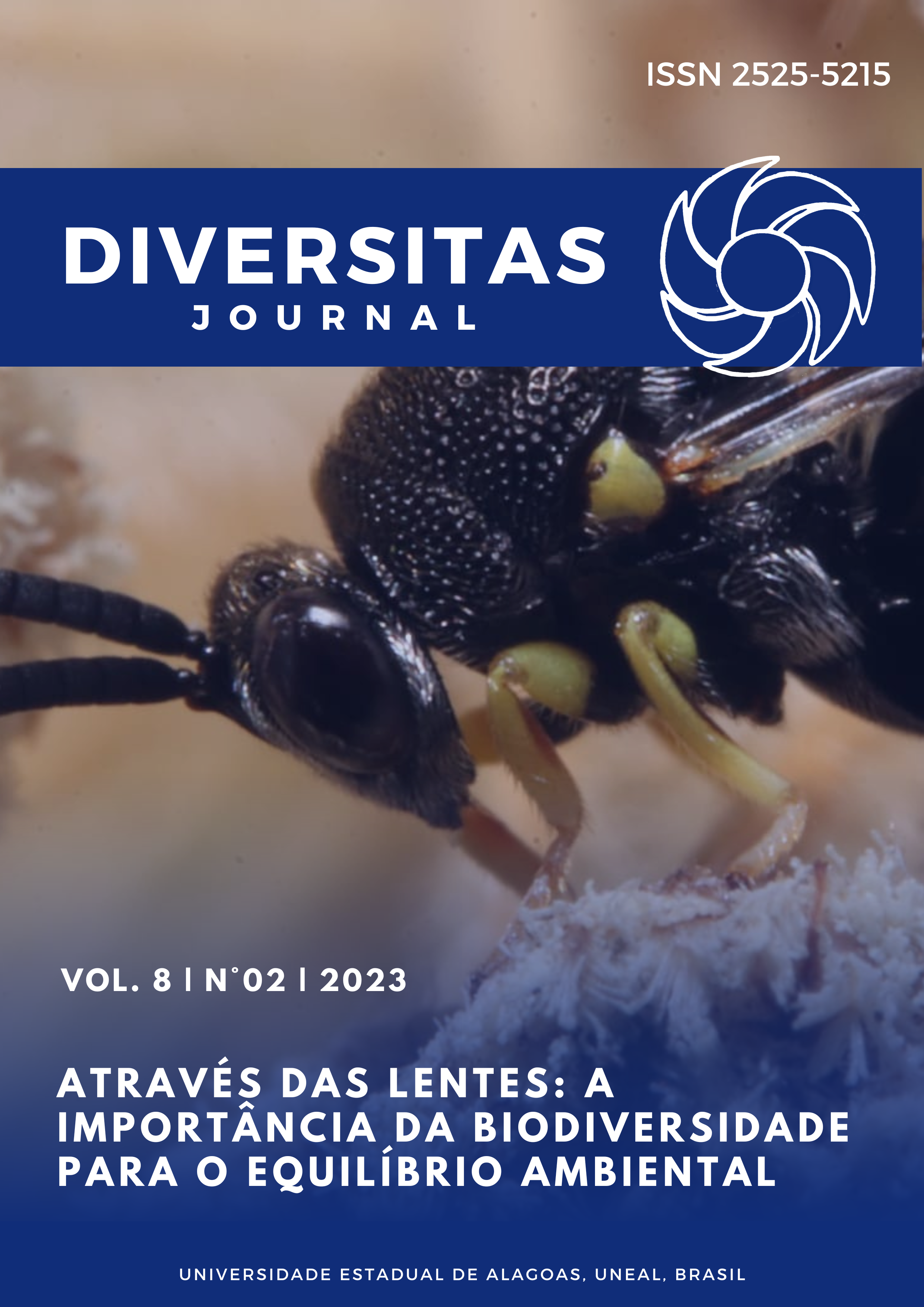Gibberellic acid in the emergence and early development of star fruit seedlings
DOI:
https://doi.org/10.48017/dj.v8i2.2460Keywords:
Propagation, Seed, Star fruitAbstract
Star fruit (Averrhoa carambola L.) is an exotic fruit originating in Southeast Asia and has seeds with low germination. The objective was to evaluate the effect of gib berellin on the emergence and initial development of star fruit seedlings. The seeds were removed from the fruits and washed in running water, and pl aced in gibberellin sol ution 1,000 mg.L-1, 2,000 mg.L-1, 3,000 mg.L-1, 4,000 mg.L-1and pure water as a control. for 30 minutes. Sowing was carried out b y placing 1 seeds per 280 mL tube in a substrate containing ravine soil + tanned manure (3:1) in a randomized block experimental design. Thirty days after the emergence of the first seedl ing, the percentage of emergence, emergence speed index and mean emergence time were evaluated. Ninety days after the emergence of the first seedling, the seedling height, collar diameter, number of leaves, root length were evaluated; green and dry massof the leaves, green and dry mass of the roots. The star fruit seed has a low percentage of germination, with low emergence rates, and the use of gibberellin was efficient to increase and accelerate emergence, showing a positive response to the variables plant height, number of leaves, stem diameter and length of the seed. source. The treatment with gibberell ic acid had a positive effect on the emergence and devel opment of star fruit seedlings, and on the mass production of leaves and roots, with the concentration of 1,000 mg.L-1showing the best results.
Metrics
References
Alvares, C. A., Stape, J. L., Sentelhas, P. C., Gonçalves, J. L. M. & Sparovek, G. (2013). Köppen’s climate classification map for Brazil. Meteorologische Zeitschrift, 22(6), 711-728.
Araujo, E. F.; Araujo, C. F.; Araujo, R. F.; Galvão, J. C. C.; Silva, R. F. (1996). Efeito da escarificação das sementes e dos frutos de Stylosanthes guianensis (Aubl.) Sw. Na germinação. Revista Brasileira de Sementes, 18(1), 73-76.
Baskin, J.M. And Baskin, C.C. (2004). A classification system for seed dormancy. Seed Science Research. 14, 1-16.
Carvalho, N.M.; Nakagawa, J. (2000). Sementes: ciência, tecnologia e produção. Jaboticabal: Funep, 588p.
Chitarra, M. I. F; Chitarra, A. B. (1990). Pós-colheita de frutos e hortaliças: fisiologia e manuseio. Lavras: UFLA.
Cordeiro, J. A. D. (1979). Crescimento, diferenciação e produção em plantas de sorgo granífero Sorghum bicolor (L.) Moench, trataradas com os ácidos giberélico-3 e anaftalenoacético. 50f. Dissertação (Mestrado em Fitotecnia) Universidade Federal do Ceará, Fortaleza.
Davies, P. J. (1995). The plant hormones: their nature, occurrence, and functions. In: Davies PJ (2 Ed) Plant hormones: physiology, biochemistry and molecular biology. London, Kluwer Academic Publishers. 1-13.
Donadio, L.C.; Nachtigal, J.C.; Sacramento, C.K. (1998). Frutas exóticas. Funep, Jaboticabal, SP. 279p.
Gomes, R. P. (1989). Fruticultura brasileira. Nobel, São Paulo. 446p
Incaper. (2011). Planejamento e programação de ações para Santa Teresa. Programa de assistência técnica e extensão rural PROATER, Secretaria de Agricultura, Santa Teresa: SEAG, 33p.
Krikorian, A. D. (1991). Medios de cultivo: generalidades, composición y preparación. In: Roca, W. M.; Mroginsky, L. A. (Eds.). Cultivo de tejidos em la agricultura: fundamentos y aplicaciones. 41-77, Cali: CIAT.
Ohashi, S. T. (2005). Varianilidade genética e fenotípica entre procedências de paricá Schizolobium parahyba var. amazonicum (Huber ex Ducke) Barneby visando seleção de materiais genéticos para sistemas agroflorestais. 107 f. Tese (Doutorado em Ciências Agrárias) – Universidade Federal Rural da Amazônia, Manaus.
Paixão, M.V.S. (2019). Propagação de plantas. 2.ed. Santa Teresa: Ifes, 230p.
Taiz, L.; Zeiger, E. (2017). Fisiologia vegetal. 6.ed. Porto Alegre: Artmed, 722 p.
Vieira, E. L.; Castro, P. R. C. (2003). Ação de bioestimulante na cultura do feijoeiro (Phaseolus vulgaris L). In: Vieira L & Castro PRC (1 Ed), Feijão Irrigado Tecnologia & Produtividade. Cosmópolis, STOLLER. 73-100.
Vieira, A.R.; Vieira, M. Das G.G.C.; Oliveira, J.A. Santos, C.D. (2000). Alterações fisiológicas e enzimáticas em sementes dormentes de arroz armazenadas em diferentes ambientes. Revista Brasileira de Sementes, 22(2), 53-61.
Downloads
Published
How to Cite
Issue
Section
License
Copyright (c) 2023 André, Arthur, Marcus Vinicius Sandoval Paixão, Gabriel, Kassio, Resende

This work is licensed under a Creative Commons Attribution 4.0 International License.
The Diversitas Journal expresses that the articles are the sole responsibility of the Authors, who are familiar with Brazilian and international legislation.
Articles are peer-reviewed and care should be taken to warn of the possible incidence of plagiarism. However, plagiarism is an indisputable action by the authors.
The violation of copyright is a crime, provided for in article 184 of the Brazilian Penal Code: “Art. 184 Violating copyright and related rights: Penalty - detention, from 3 (three) months to 1 (one) year, or fine. § 1 If the violation consists of total or partial reproduction, for the purpose of direct or indirect profit, by any means or process, of intellectual work, interpretation, performance or phonogram, without the express authorization of the author, the performer, the producer , as the case may be, or whoever represents them: Penalty - imprisonment, from 2 (two) to 4 (four) years, and a fine. ”


















